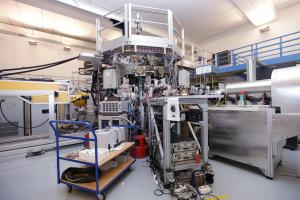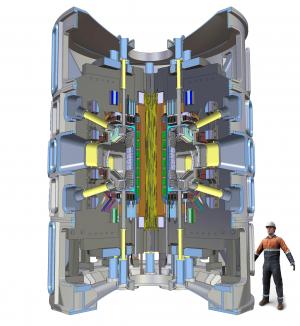Curtain call for the COMPASS tokamak
Over its long and valuable lifetime, COMPASS trained generations of students in ITER-relevant plasma physics studies. Originally operated at the Culham Science Centre in the United Kingdom (1992-2002), it was offered by the European Commission and the UK Atomic Energy Authority to the Institute of Plasma Physics, Czech Academy of Sciences in 2004. During installation and commissioning (2006-2011) COMPASS was enriched with enhanced diagnostics, new control and data acquisition systems, and completely new power supplies. In 2012 scientists achieved H-mode on the COMPASS device, making it one of only four devices in Europe capable of operating in high confinement mode (with ASDEX-U, JET and TCV). Further enhancement of the neutral beam auxiliary heating system enabled the team at the Institute of Plasma Physics to carry out plasma physics studies in ITER-like regimes.
"Twelve years of successful operation and exploitation of the COMPASS tokamak at the Institute of Plasma Physics in Prague has been instrumental in obtaining national funding for the construction of a new facility—the COMPASS-U tokamak," says Director Radomír Pánek.
COMPASS-U will be the only medium-sized tokamak in the world capable of confining the plasma using magnetic fields up to 5 T and generating conditions similar to ITER and DEMO (plasma geometry, high power fluxes in the divertor region, high density...). It will be also able to operate with the first wall at the temperature of 500 °C, allowing scientists to make significant contributions to the design and operation of future fusion power plants. In particular, the device will be used by Czech and international colleagues to address some of the gaps in heat exhaust physics, one of the key challenges identified in the EUROfusion Roadmap to the Realisation of Fusion Energy.
"The design and construction of such a high-magnetic-field tokamak, capable of operation with liquid metal technology, brings a lot of challenges," explains Pánek. "Nevertheless, the team has already successfully passed the final design review of tokamak assembly and some of the auxiliary systems, for example the new the power supply system and the first 1MW neutral beam injection module have been already manufactured."
It will take the team approximately two months to disassemble COMPASS. A significant modification of the experimental hall must get underway soon in order to be ready for the assembly of COMPASS-U. The start of operation is planned in 2024.
Resources:
COMPASS final plasma shot (20 August 2021)
COMPASS-U animation
More on the Czech Institute of Plasma Physics



